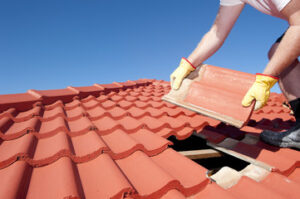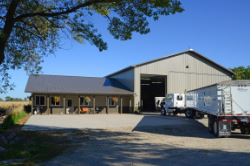Whether they’re re-shingling residential homes or installing flat roofs on commercial buildings, Roofers have an exciting and challenging career. This is a trade that offers a high salary and job satisfaction ratings. It requires strong manual dexterity and the ability to work at heights in various weather conditions. They also have to follow strict safety procedures and regulations.
Roofer Riverview is responsible for installing and repairing the roofs of homes and commercial buildings. Their duties include analyzing construction plans, inspecting roofing materials and structures to ensure compliance with industry standards, and determining which roofing materials and accessories are needed for the project. They must also be able to work well under pressure and in adverse weather conditions. In addition, they must be able to use hand tools and climb up ladders and scaffolding for long periods of time.
The job of a roofer involves heavy lifting and climbing, and it can be very hot during the summer. It is also important that roofers have good communication skills and the ability to follow safety procedures. They may also be required to perform other duties as necessary in the workplace, such as preparing estimates and responding to daily service calls.
Skilled journey level work inspecting, maintaining, repairing, designing, or altering roofing and related equipment; identifying sources of leaks and water damage and making temporary or permanent repairs; installing or removing roofing materials; conducting tests on water samples. Journey level roofers may direct the work of less skilled helpers and apprentices. They often prepare and maintain various records and documents regarding their work.
Under supervision, Roofers perform the full range of roofing tasks on both commercial and residential structures. They also identify the type of roofing materials required for each project, and they determine how much material is needed to complete the work. They also communicate with supervisors about progress, problems, and potential hazards. They may prepare and submit labor and material estimates, and they may also prepare or approve purchase orders.
In the Holland Code framework, Roofers have strong Realistic interests and tend to enjoy working with plants, animals, and real-world materials. They may also have an interest in repairing and maintaining machines and tools. They often have a strong desire to learn and grow, and they are usually very reliable workers. In addition to these traits, they are usually very hardworking and have good manual dexterity. Roofers are often required to travel from site to site, so they should have a valid driver’s license.
Education and Training Requirements
Roofers are trained to repair and install a variety of different roofing materials, including shingles, metal, and clay tiles. They also learn about the different weather conditions that may affect a building’s structure and how to adjust the materials accordingly. Additionally, they are trained to properly ventilate the building, which is critical for preserving structural integrity.
The minimum educational requirement for becoming a Roofer is a high school diploma. Most Roofers undergo on-the-job training in which experienced workers teach them how to use tools, equipment, and machines. This training typically lasts from a few months to a year. New Roofers are usually given tasks that require less physical labor, such as carrying equipment and materials or erecting scaffolds and hoists, while they work to gain experience in the field.
In addition to on-the-job training, Roofers can also pursue an apprenticeship program to receive a formal education in the trade. Apprenticeship programs offer a superior education at little to no cost, with a salary and veterans’ benefits during training.
Other important qualifications for Roofers include strong manual dexterity and the ability to work at heights in adverse weather conditions. They also need to be knowledgeable about construction processes, regulations, and safety guidelines.
Work Environment
Roofers must possess good manual dexterity, be comfortable working at heights and in adverse weather conditions, and understand and respect construction industry regulations and safety procedures. They must also be able to identify and eliminate any potential falls hazards before starting work, including unprotected roof openings/edges, holes, gaps, weak spots, shafts, skylights, etc. Falls are the number one cause of death in the construction industry, but many of them can be prevented with proper safety measures.
Salary
Roofers can earn a salary of around forty-eight thousand and twenty dollars per year on average. People with this job usually have strong Realistic interests, which means that they prefer to work in occupations that involve practical, hands-on problems and solutions. They often have good job satisfaction and fulfillment.
Working as a Roofer requires physical stamina, the ability to work in adverse weather conditions, and knowledge of construction regulations and safety procedures. It is also important to have excellent manual dexterity and be able to follow instructions well. Those interested in this profession should consider vocational training programs in construction, with a specialization in roofing.
Roofers are responsible for the installation and repair of roofing on various types of structures. They often work with other members of the construction team, including architects and builders, to ensure that projects are completed on time and to the customer’s specifications. They may also interact with customers or clients to discuss the scope of work and establish expectations. The future prospects for Roofers are generally stable, but can vary depending on economic changes and the size of individual construction projects. They may also face competition from other workers with similar skills. Roofers are also required to maintain their professional certifications in order to remain competitive in the field.

